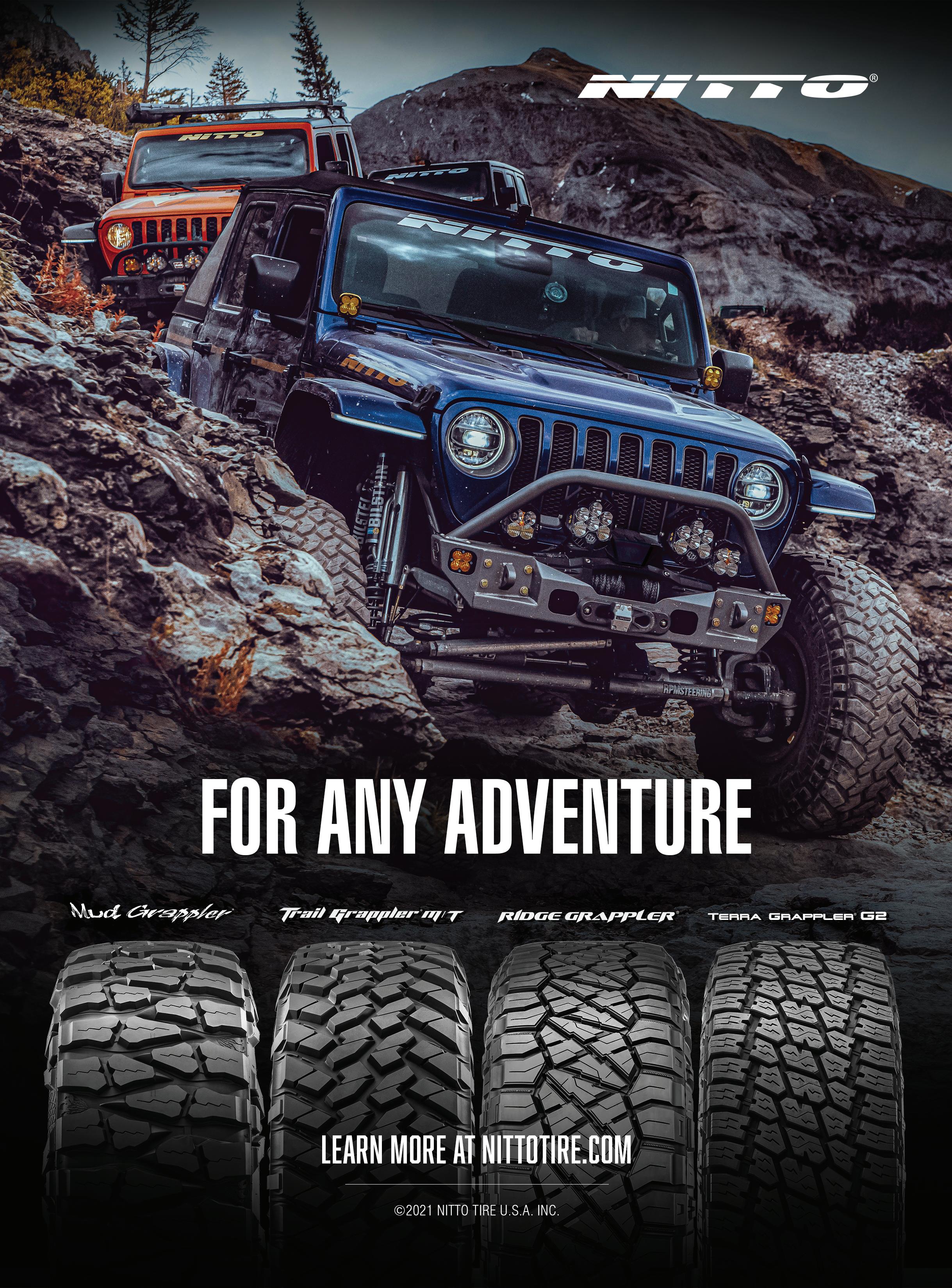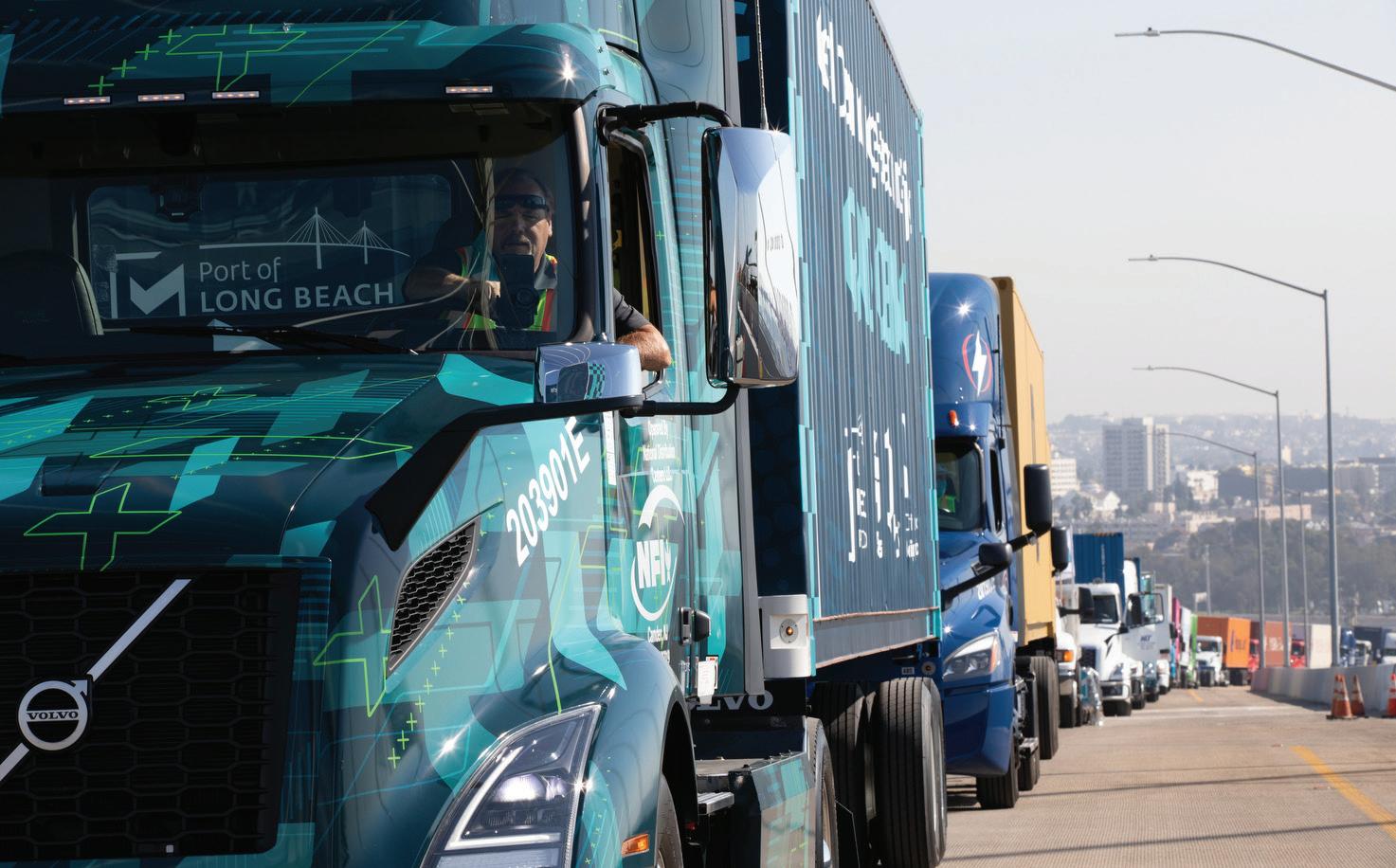
40 minute read
Yokohama Off Highway ramps up

from Modern Tire Dealer - June 2021
by EndeavorBusinessMedia-VehicleRepairGroup
Commercial truck tires ELECTRIC TRUCKS POSE CHALLENGES FOR TIREMAKERS
RANGE, TORQUE AND WEIGHT ARE CONCERNS
By Mike Manges
Electric vehicles (EVs) for personal use are getting a lot of press, but electrification is coming to the domestic heavy-duty truck market, too.
Some of North America’s largest truck manufacturers — including PACCAR, Volvo
Trucks North America and Daimler Trucks
North America — are rolling out new electric rigs, while companies like Tesla, Nikola and
BYD continue to take electric truck orders.
What impact will electric trucks have on commercial truck tire design and construction?
As with electric cars, dynamics like range, torque and weight are concerns, say truck tire manufacturers.
Bob Klimm, director of commercial tire sales, Sumitomo Rubber North America Inc., says “the expectation of the replacement tire to support electric heavy-duty vehicles by maximizing driving distance is assumed to include some combination of rolling resistance, while maintaining mileage life and traction.”
Tires also will need “to withstand higher torque based on the sudden acceleration capabilities” of electric trucks, says Rob
Williams, vice president of U.S. TBR sales,
Hankook Tire America Corp.
“In electric vehicles, you get the maximum torque when accelerating right from the very start,” says Tom Fanning, head of U.S. market for truck tires, Continental Tire the
Americas LLC.
“Tires on electric vehicles can therefore be subject to greater levels of stress during acceleration, which in turn affects their endurance and wear values.”
Charles Luther, northeast regional manager, Triangle Tire USA, says “the demands of tires on (electric trucks) will quite possibly differ from standard or even SmartWay-approved tires. There will be increased emphasis on roll time and therefore increased emphasis put on reducing tire rolling resistance.”
Weight support will be another key performance attribute, according to Ken
Electric trucks “require tires that can handle the additional load capacity due to extra weight from batteries, provide lower rolling resistance for increased range and offer wear life comparable to — or sometimes even better than — a standard tire,” says Ben Johnson, director of marketing, Bridgestone Americas Tire Operations, U.S. and Canada. (Pictured, a Volvo Class 8 VNR Electric truck leads a “clean truck parade” in Long Beach, Calif. Volvo brought the VNR Electric to North America in 2020.)
Coltrane, director, marketing and product development, Prinx Chengshan Tire North America.
“With truck tires, the additional weight associated with electric commercial trucks is going to translate into higher load capacity and ply ratings — moving away from 14-ply to 16-ply.”
“What we are seeing is heavier equipment than standard diesel-powered (vehicles) due to the increased weight of batteries,” says Alan Eagleson, TBR segment manager, Sailun Tires America. “This means a commercial vehicle tire must be capable of carrying a heavier load,” which, he notes, “shouldn’t be an issue since (truck) tires are typically over-engineered for their applications.”
Wear is another concern, says Rick Cunat, managing director of Kumho Tire USA Inc.’s Americas technical center. “The desire to maintain consistent tire performance from new tire to worn-out tire” may require tread patterns “that increase in amplitude or aggressiveness as the tire wears.”
“Electrification is a trend that will impact many different segments of the market,” says Ben Johnson, director of marketing, Bridgestone Americas Tire Operations, U.S. and Canada.
“The initial focus for tires used on regional and line-haul applications will likely (be) on low rolling resistance to contribute to vehicle range,” notes Pierluigi Cumo, director of marketing, on-road, Michelin North America Inc.
Electric truck development will “push (tire) technology development ahead of schedule to meet the unique demands of this emerging market,” says Dave Johnston Sr., manager, commercial products and business development, Toyo Tire U.S.A. Corp.
“The performance characteristics of tires for electric vehicles are not that different from tires on fuel-powered vehicles,” notes Rick Phillips, CEO of Keter Tire USA Inc.
Focus also “is moving more towards products that are application-specific and away from ‘one tire fits all.’”
YOKOHAMA OFF-HIGHWAY RAMPS UP
MORE AG, OTR TIRES ARE ON THE WAY, SAYS NANAVATI
By Mike Manges
Yokohama Off-Highway Tires America Inc. (YOHTA) is rolling out new products and is further refining its “one-stop shop” concept, says Dhaval Nanavati, the company’s president. In this interview, he provides an update on the company’s third plant in India, market demand that YOHTA is seeing and more.
MTD: Alliance Tire Americas Inc. became YOHTA this past January. Why was the rebranding decision made? What are the benefits for both the company and its dealers?
NANAVATI: Yokohama, our parent company, decided to put everything under one umbrella to focus on customers in the offhighway arena. This leverages the strong legacy of the premium Yokohama brand and its 100-plus years and also leverages the continued strength of Alliance.
We think this will create a huge value for all of our stakeholders. One, it creates a focus on the strength of each entity — the old Alliance Americas Tires and the old Yokohama Tire Corp. OTR business coming together under YOHTA. It provides a single point of offering for all of our products. It’s a one-stop shop for all the needs of the customer. It also offers a single program for all of our brands. It leverages and pools resources, data, IT — all under one roof — again, under the Yokohama brand.
The new entity offers products at multiple price points to meet our dealers’ needs. Each segment has a full portfolio and each portfolio has a complete product line.
MTD: YOHTA is now in the U.S. medium truck tire market with the Galaxy line. Are you pleased with the line’s acceptance?
NANAVATI: We are very pleased with the roll-out. The acceptance in the market has been great. It’s actually a very complementary product to our wide range of off-highway products.
MTD: You have maintained a robust new product launch schedule on the ag tire side with the Alliance brand. Will we see more in 2021?
NANAVATI: Yes. We have aggressively launched new products. We target a certain percentage of growth each year. We want to be a leading player in terms of tire engineering and application and continue to offer unique products to customers to help them improve productivity and reduce costs.
MTD: What can we expect to see from the Galaxy OTR brand in 2021?
NANAVATI: On the Galaxy OTR side, we have an exciting lineup of new products, which we are planning to launch throughout 2021. It will be a very big year for the Galaxy OTR range. We also

“We have seen very robust demand in OE and the aftermarket,” says Dhaval Nanavati, president of Yokohama Off-Highway Tires America Inc., formerly known as Alliance Tire Americas Inc. “As far as capacity, we are running to meet demand.”
are launching several products in the Yokohama brand and will expand the offering into a new segment.
MTD: On the OTR side, are you positioning the Yokohama brand above the Galaxy brand in terms of pricing?
NANAVATI: Yes. There is definitely going to be a two-tier approach, with two-tier pricing. Yokohama will be the premium segment and Galaxy will be the value segment we are focusing on.
MTD: How is the new plant in India coming along? Is it still on track to begin operating during the first quarter of 2023?
(Editor’s note: Last September, Yokohama announced it will build a new specialty tire plant in India. The company has two other plants in that country.) NANAVATI: Construction has started and we estimate shipping new tires out of the plant in early to mid-2023. Every year we invest in our factories in India on a very consistent, regular basis.
MTD: Are you optimistic that the markets your company serves will continue to see healthy demand?
NANAVATI: We have seen very robust demand in OE and the aftermarket. As far as capacity, we are running to meet demand. Our goal is to deliver the right tire to the right place at the right time. And we have been able to deliver that value proposition to our customers.
We did see some challenges, I would say, in some shipping lanes. But I would say our supply chain team has been able to successfully navigate those challenges.
By Jeff Morgan
HOW TO LEVERAGE EVENTS TO ATTRACT NEW CUSTOMERS
All of us are looking for ways to generate new business. There are two basic ways to accomplish this: do more with the customers that you have or increase the number of customers you serve.
While both are effective, one is much more limiting. The greatest gain comes in finding ways to bring in more customers.
There are a number of things that can impact this, such as staffing, productivity and hours of operation. While I can drone on and on about any of those, I want to spend some time on grabbing the attention of — and drawing in — new customers.
Like most tire dealers, you probably advertise in multiple forms. Do you remember the old adage, “Doing the same thing and expecting different results is the definition of insanity?”
I am not suggesting that your current methods are ineffective. What I am suggesting is that if you really want to maximize opportunities to draw in new business, you need to consider and try some different approaches. Think outside the proverbial box.
I want to share some ideas that have worked well that you might consider, if you are not already actively practicing them.
The first is event partnerships. I am referring to more than being the sponsor of a hole during a golf tournament or paying to have a banner put up at a local high school athletic field. I mean being a true partner in an event of some type.
Getting involved with various car groups is a great example. Perhaps you can leverage your location to host a car show on a Sunday afternoon. You can provide prizes for the winners, offer special discounts to contestants and offer door prizes for attendees. You can put products on display and have people there to answer questions or create sales quotes, if needed.
Events like this can produce a lot of new customer leads. The first leads come from car club members. These people are
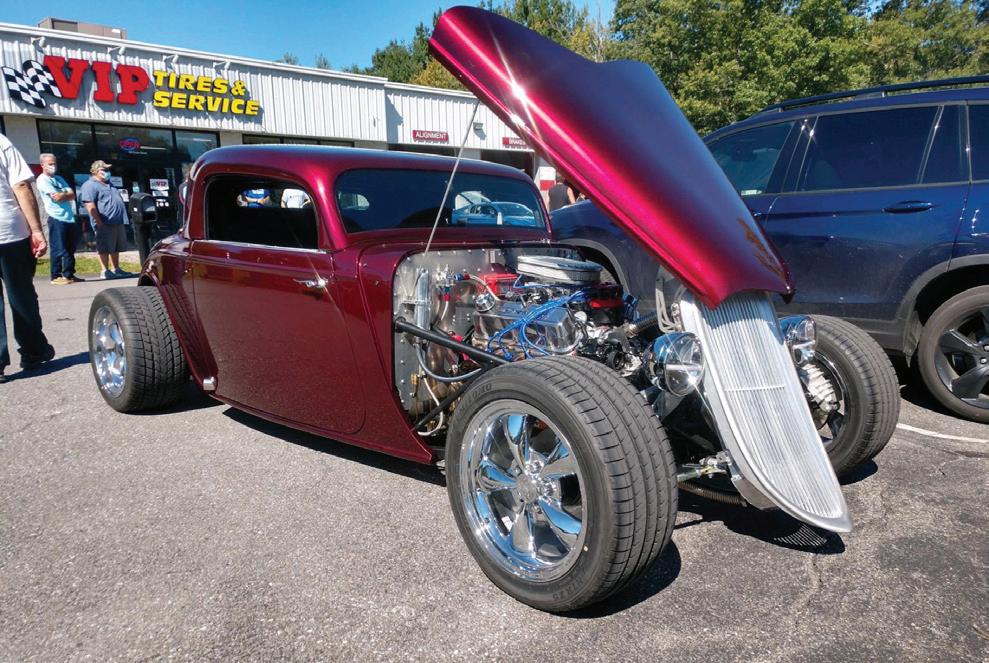
Getting involved with car clubs is a great way to showcase who you are. After interacting with your people at events, club members just might be inclined to bring their vehicles to you.
typically a loyal bunch. When they see you investing in them, they like to reciprocate.
You already know that they are passionate about their show cars, but they likely have other vehicles at home that need tires and service work, as well.
You may even become the provider of choice for all of the club members’ vehicles. I know a dealer who got involved with a Toyota Land Cruiser club and now his location is seeing several of these vehicles each week.
Keep in mind that the people who come to these events may not even know who you are or where your dealership is located. They could be coming from outside your normal attraction area or they could live around the corner. Often we just assume that everyone around us knows we are there and what we do. You might be surprised at how often this is not the case.
Getting involved with car clubs is a great way to showcase who you are. After interacting with your people at events, club members just might be inclined to bring their other vehicles to your store.
However, events do not always need to be automotive in nature. In fact, you might even find more success with community events.
I know another tire dealer who partners with his community to sponsor a used car seat recycling program.
People bring used car seats to his location, where they are dismantled by employees and materials are sent out for recycling. This brings people into his location who may not have visited before. And it provides an opportunity to impress customers when they come in.
Perhaps you can do the same and even offer a discount for a basic service as a reward for donations. This can get that car in your bay and give you a chance to “wow” a new customer with exceptional service.
Participating in other community events can help garner attention. Consider park clean-up campaigns. You and your employees can go to a local park to pick up trash, fix some playground equipment, etc.
In addition to creating goodwill, this can provide you with some great photos to post on social media.
Many dealers use social media to share human interest stories, as well.
You can discuss interesting tidbits about your employees — with their consent, of course — as well as share positive outcomes to challenging problems or just provide fun information that will get people engaged.
The goal is to get people to see your business as more than just a place to buy tires and service. They will begin to see you as a member of the community who is just like them.




We all know that many people are fearful of getting their cars worked on. However, if they form an opinion of you that is positive, they will be much more likely to give you a chance. Social media can help.
Another great way to get new customers is for you to go to them. I am talking business-to-business here. ere are so many businesses around you that have vehicles. ese potential customers do not need to have big eets. However, treat them right and their employees will start coming to you, too.
A simple way to prospect is to simply sit at a major intersection near your location. Spend 30 minutes with a pen and paper. When you see a vehicle with a logo, name and/or phone number on it, write it down.
Plumbers, orists, construction companies — these are businesses that are already active in your area. Go back and check to see if they are currently doing business with you. If not, they are a prospect.
Physically visit some of these businesses, if they are nearby. Go in and ask for whoever is in charge of maintaining their vehicles. Introduce yourself and ask who they are working with now. Do not bad-mouth whoever that company is. Simply say that you would like a chance to earn this potential customer’s business.
Encourage them to call you if their current provider cannot take care of a need they have. Perhaps even o er a free oil change to entice them to come in and experience your business for themselves. e key here is to stay in contact. A er the rst visit, the person with whom you talked may not remember you.
Make detailed notes about who you talked with, who they work with and maybe even the vehicles they use.
Stop back in from time to time and say hello. Ask how things are going with the tire and service supplier they are using. Maybe ask a little bit more about what types of services they use this company for. Is it just tires? Preventive vehicle maintenance? All vehicle repairs? Reiterate that you really want a chance to earn their business and remind them to reach out if you can ever be of service.
Sooner or later, an issue will arise. ey will remember you and give you a chance. When that happens, move heaven and earth to take care of their needs. Impress them with your service and invite them back. While this business-to-business method takes time to build, it will help keep your bays busy. e bottom line is to be willing to try a di erent approach.
Get yourself and your business in front of potential new customers, instead of hoping that they will nd you. Consumers have plenty of choices. Unless they are looking for something only you have or need a new place in general, they will not necessarily come hunting for you. However, if you present your business to these people in a positive way, they may turn to you in a time of need. ■




Tire industry veteran Jeff Morgan is the executive director of Dealer Strategic Planning, the DSP Group. He can be reached at jeff.morgan@20dsp.com or (651) 846-9871. For more information, see www.20DSP.com.
THE ROAD AHEAD IS PAVED WITH GOOD FORTUNE

F RTUNE
TIRES
PRINX CHENGSHAN TIRE NORTH AMERICA, INC
5757 W. Century Blvd, Suite 752, Los Angeles, CA 90045 310.205.8355 | info@prinx.us.com
FAR602 FDH106 FTH107
STEER DRIVE TRAILER
The ‘wage wars’ are here
HOW TO ARM YOURSELF FOR SUCCESS
By Dennis McCarron
Afew years ago, I wrote about an impending “wage war.” The primary driver at the time was a shrinking talent pool at the beginning of the pipeline and an aging skilled workforce. (At the time, the average age of a master certified technician was 55.)
When you combine those two factors, it creates a wage imbalance. Employees at the top of skilled positions know they can command virtually any price if they can fix virtually any car. And employees at the entrance of the job market also know that reliable help is scarce and support for a high minimum wage is strong. Now add to the mix three items:
Let’s look at a few things you should be doing to assemble the best team:
1. A surge in demand; 2. Government-run unemployment rules that can potentially pay more for people to stay home than you can pay them to work, and; 3. A restaurant industry that lost nearly all of its workers, who have had a year to choose employment in new industries. Restaurants are desperate to reopen to full capacity and customers are desperate to spend money there. Restaurant owners will pull from anywhere to fill entry-level positions.
Retain. This is the best tactic to use when you already have a really good team. Have you given out raises because of COVID-19? Have you retooled your bonus programs to reflect the times? I’m sure you’ve adjusted your hours. Are you adjusting back? If so, how will you explain this to your employees? All of these questions are critical in retaining your employees. Right now, there are many tire dealerships that are dealing with a surge in demand and not enough employees. That puts two pressures on you: higher wages and better working conditions. Decade after decade, employment polls show that money isn’t everything. Employees want good bosses, good co-workers and safe working conditions. Money is a strong initial pull, but if you want long-term employees, you must meet wage demands and maintain proper working environments. Recruit. Sorry, traditional recruiting is not going to cut it. Large online employment seeker sites are not your go-to solution in a crunch. Recruiting in a wage war is a matter of relationships. Talk to your current employees, put the word out that you are hiring and ask for references. However, do not under any circum-
There isn’t a “first shot” or dot on a stances lower your standards. As a matter timeline to indicate when a wage war is of fact, you can use this opportunity to going to happen. It’s raise your standards. more like a confluence Football coach of events. You may not There are high achievers Nick Saban once said, know when a wage war will start, but in this industry, but some “Mediocre people don’t like high achievyou will know when you’re in one. And of them may currently ers and high achievers don’t like mediocre you should definitely work somewhere else. people.” know that you are in There are high one. And it’s not just technicians. It’s talented achievers in this industry, but some of sales and management people, as well. These them may currently work somewhere else. workers know their value. You should, too. I’m not an advocate of stealing employees.

Employees at the top of skilled positions know they can command virtually any price for their services.
But If I have the best team, the best store, the best equipment, the best benefits and the best management, I don’t have to recruit a whole lot. Usually people are looking to get on board.
Invest. It’s time to make your store shine. Improvements don’t have to be expensive, but your store has to be clean and sharp. Fresh paint, a waxed floor and an updated waiting area? That’s a start. How about the employee bathroom or changing area?
These things matter always, but especially in an ultra-competitive environment. No high achiever wants to work at a dealership where the outside lights and signage don’t all work or the glass in the door is cracked.
You might be asking yourself, “How am I going to pay for all this?” That’s a legitimate question.
But how are you going to pay for anything when your good talent leaves? The good ones always go first because they have a strong sense of self worth.
Please don’t delay. Get your pricing sorted out, give raises to those who deserve it, clean up your place and you’ll be fine. Just start taking action on the things you can control. ■
Dennis McCarron is a partner at Cardinal Brokers, one of the leading brokers in the tire and automotive industry (www.cardinalbrokers.com). To contact McCarron, email him at dennis@cardinalbrokers.com.
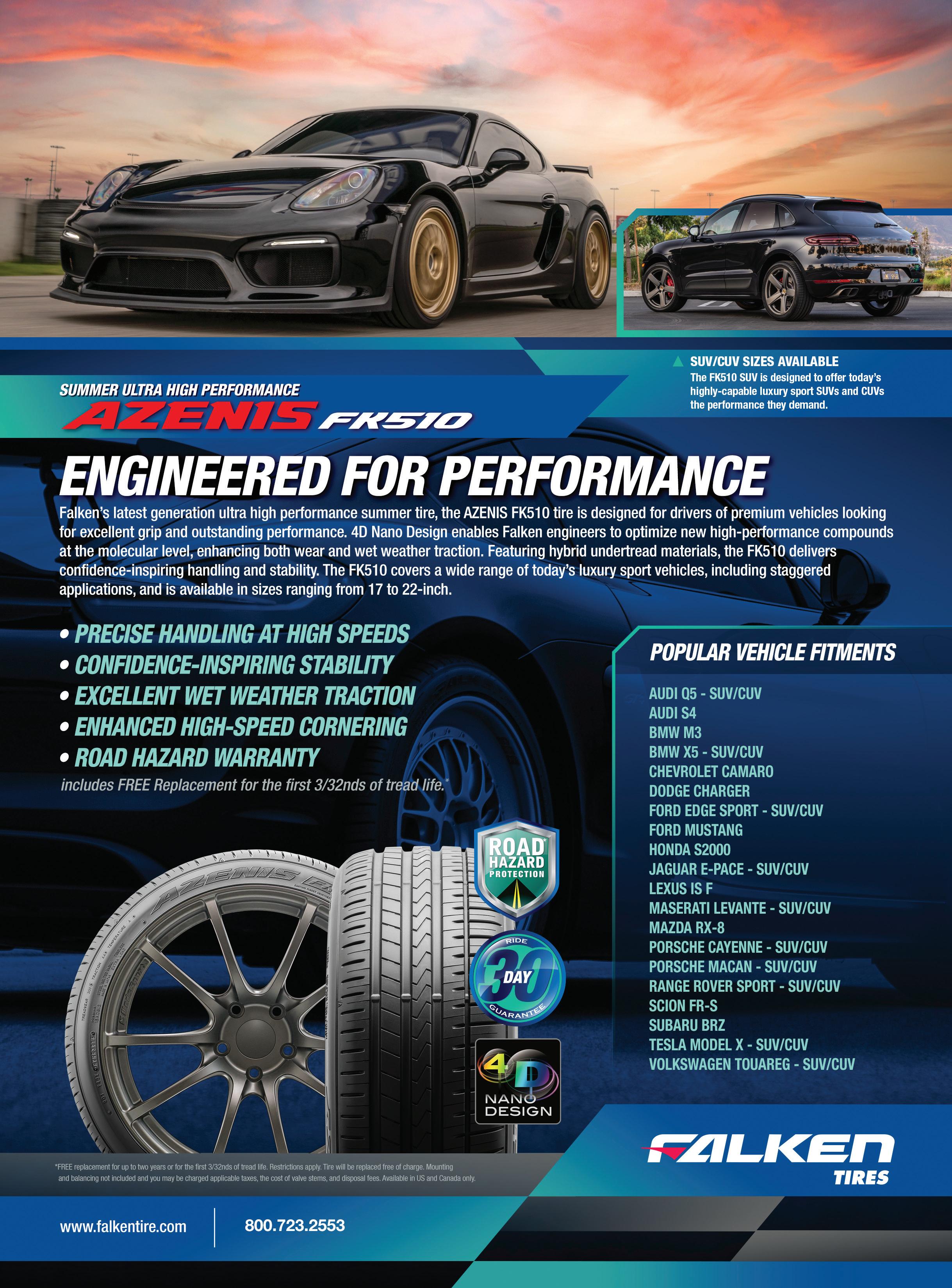
Integrating retail into a commercial tire business
HOW TO GRAB THE LOW-HANGING FRUIT
By Michael McGregor
As commercial tire dealers look to enhance their business values into the same stratosphere as retail tire dealers, some are looking at integrating the more profitable elements of retail business into their commercial operations.
From a customer retention and profit perspective, this makes perfect sense. The more touch points you have with a customer, the more value you add and the greater customer loyalty you’ll enjoy.
The challenge is doing this without taking your eye off your core commercial business. After all, it’s tough enough being good at one business, let alone two or three.
Many commercial tire dealers offering heavy or medium truck and OTR/ag tires do some sort of retail business already.
If you don’t, but want to, think about taking an incremental, step-by-step approach until you are satisfied with what you have.
Don’t fundamentally change who you are and what you do. And go after the low-hanging fruit.
In terms of what to go after for retail-like business, I’d take it in this order:
1. Passenger and light truck vehicles that are part of your existing customer’s fleet.
You already have a relationship with the company and the work is already billed monthly; 2. Personal vehicles owned by drivers of a customer’s commercial vehicles. Let drivers know that they can bring their family’s vehicles in for tires and service and that you’ll give them a discount; 3. Personal vehicles owned by all other employees of your customer. Spin it as an employee benefit and that all employees will get a special discount, and; 4. Other business services companies in your trade area that have fleets of vehicles, like light construction, plumbing, glass, delivery or landscaping operations. Offer special pricing and monthly billing.
Now for the “how-to.” Think about what you do already and see how you can integrate retail into that. Focus on these areas: business. Maybe print up discount cards for your salespeople to hand to customers when they see them. Don’t advertise retail at first, other than on your website. And please, no loss leaders. Promote quality. People. A friend of mine who used to run groups of Tire Centers LLC locations
Products and services. You’ll likely start always integrated retail into his commercial with tires, tire-related services, brakes, operations. He’d take the least productive alignments and undercar services. It goes commercial salesperson and find a better without saying that you’ll need the proper replacement, put him behind the counter equipment and qualified technicians who can and place him in charge. His thinking do those services. Think twice about getting was that the guy understood commerinto drivability because of the higher cost and cial tires and the importance of treating potential downside. everyone well because
Price. You can’t be one never knew who priced higher than where tire and service Don’t fundamentally that “retail” customer might truly be. retailers in your area change who you are and Process. This same are. That administrative assistant to the what you do. friend got everyone’s attention in the store CEO needs to feel that when launching retail she got a great deal, too. (You’ll hear about it by having a full employee meeting after if she feels otherwise.) Start with 10% off the hours. You’ll have to come up with a process normal retail price in your area and see how that is more like the traditional retail process that goes. Make sure you can take Visa and so customers can get in, get serviced and Mastercard and that you have a cash drawer. get cashed out the same day.
Place. Make your facility as conducive to retail business as you can. Hopefully you can My experienced commercial tire buddy dedicate a couple of service bays to this new doesn’t call this business “retail,” by the way. business. You’ll need a front counter where He calls it “commercial light mechanical customers can be greeted, clean bathrooms service” and he feels that this is better than and a customer waiting area. Do the best “regular retail” because the customers are that you can to make the commercial facility generally nicer. as pretty as a retail facility. Regarding store Both parties realize the business relationhours, don’t change them. The idea is to ship is important. These customers trust integrate this into your existing business. If you already and will give you the benefit you’re open five days a week and are closed of the doubt. ■ Saturday and Sunday, stay that way. Altering this can have a significant impact on your Michael McGregor is a partner at Focus Investment economics and employee morale. Banking LLC (focusbankers.com/tire-and-service)
Promotion. This new business can be and advises and assists multi-location tire dealers built with grassroots marketing. Your sales- on mergers and acquisitions in the automotive people should be happy to get the word out, especially if they are commissioned on the aftermarket. For more information, contact him at michael.mcgregor@focusbankers.com.
Lexus-ES Series — 2007-21
Atire pressure monitor valve sub-assembly equipped with a tire pressure sensor and a transmitter is installed in each tire and wheel assembly. The sensor measures the tire pressure and the measured value and transmitter ID are transmitted to the tire pressure monitor antenna on the body as radio waves.
These radio waves are then sent to the tire pressure monitor’s electronic control unit (ECU) from the tire pressure monitor receiver. If the transmitter ID has already been registered, the ECU compares the measured air pressure value with the standard value. When the value is less than the standard value registered in the tire pressure monitor ECU, the warning light on the instrument cluster comes on.
CAUTION: The warning system may not activate immediately if bursts or sudden air leakage should occur.
The tire pressure warning reset switch is used to address the differences in the air pressure settings by the type of tires or the differences in pressure between the front and rear tires. This switch is used to initialize the warning system after certain repair procedures.
The tire pressure warning selector switch allows two sets of ID codes to be registered. The code of the tires originally installed on the vehicle is registered on the switch at “MAIN.” When a new set of tires is installed, they can be registered in the “2nd” position. Once registered, the setting position can be changed each time tires and wheels are replaced and re-registration is not required.
NOTE: When the tires whose ID code is registered at “MAIN” are used, the system does not work properly with the selector switch set at “2nd.”
If the tires whose ID code is registered at “2nd” are stored nearby, the system will detect their tire pressure and vice versa.
NOTE: This system has transmitters with different bending angles at the tire pressure sensor for aluminum wheels.
They are not interchangeable with other wheels.
Under the following conditions, the system may not function properly:
• The areas, facilities or devices that use similar radio wave frequencies are located in the vicinity of the vehicle; • A radio device of similar frequency is used in or near the vehicle; • A lot of snow or ice is stuck to the vehicle, especially the wheels and around the wheel houses; • The battery of the sensor has been depleted; • A tire without tire pressure sensor is used; • Snow tires or tire chains are used; • The spare tire is in use, and; • If wheels other than specified ones are used, the system may not function properly because the radio waves are differently transmitted from the tire pressure sensor;
Depending on the tire type, the system may not function properly even though the specified wheels are used. Although tires with tire pressure sensors are used, the tire pressure monitoring system (TPMS) selector switch is set to the other tire setting.
TIRE PRESSURE MONITOR WARNING INDICATORS
NOTE: The tire pressure warning light may turn on due to natural causes, such as natural air leaks or tire pressure changes caused by temperature. In this case, adjusting the tire pressure will turn off the warning light.
When the tire pressure warning light and message do not go off or when they come on during driving, check tire pressure and adjust as necessary. Warning indicators should turn off a few minutes after air is put into a deflated tire. If the warning indicators are still on even though the tire pressure is correctly adjusted, the tire could be punctured. Repair as necessary.
If the tire pressure warning indicators come on within several hours after adjusting the tire pressure, the tire may have a slow air leak. If the tire pressure warning light is blinking even after adjusting the tire pressure, selection of the tire pressure selector switch “MAIN”/”2nd” may be incorrect.
If the warning light is still on or blinking, there is a malfunction in the TPMS. See appropriate manufacturer service information.
TPMS RESET PROCEDURES
NOTE: The system will need to be initialized when tires are rotated; tires are replaced with tires of different pressures; and the tire pressure sensor and/or tire pressure monitor ECU are replaced. See INITIALIZING TIRE PRESSURE MONITOR SYSTEM.
When a tire pressure sensor and/or tire pressure monitor ECU are replaced, the sensor ID must be memorized by the tire pressure monitor ECU prior to system initialization. See TIRE PRESSURE SENSOR REGISTRATION.
NOTE: Initialization is not required if re-inflating tires to the specified tire pressure.
INITIALIZING TIRE PRESSURE MONITOR SYSTEM
CAUTION: Do not push the reset switch without adjusting the tire inflation pressure of all four tires. Otherwise, the low tire pressure warning light may not come on even if the tire pressure is low or it may come on when the tire inflation pressure is actually normal. If you push the reset switch while the vehicle is moving, initialization is not performed.
NOTE: Perform initialization after the transmitter ID registration procedure, if registration is required.
NOTE: When initializing the system, the current tire condition is stored as a standard. During initialization, the tire pressure sensor measures the inflation pressure of the tires and registers the signals that are transmitted into the tire pressure monitor’s ECU at a frequency of one per minute. The initialization process is completed when the signals from the four tires have been received. The initialization process is canceled if the engine switch is turned off during initialization.
To initialize again, the tire pressure warning reset switch must be pressed again.
For this reason, once the tire pressure warning reset switch has been pressed, turning the engine o is not recommended for a minimum of 20 minutes.
NOTE: Perform the tire pressure adjustment a er the vehicle has su ciently cooled down. If the vehicle is not su ciently cooled down, increase the air pressure by three to four psi, in addition to the speci ed value. 1. Set the tire pressure of all wheels to the pressure speci ed on the tire and loading information label; 2. With the vehicle stopped and parking brake applied, turn the engine switch on. NOTE: Initialization is usually completed in two to three minutes.
When the initialization is completed incorrectly, Diagnostic Trouble Code (DTC) 2177/77 is set a er driving the vehicle for about 20 minutes or more; 3. Press and hold the tire pressure warning reset switch, which may be located to the right or le under the steering wheel, until the tire pressure warning light blinks three times at one-second intervals, and; 4. Con rm that the correct tire pressure data of all tires is displayed on the
Techstream screen. NOTE: Initialization can be terminated by connecting terminals 13 (TC) and 4 (CG) of the DLC3.
TIRE PRESSURE SENSOR REGISTRATION
NOTE: If the tire pressure sensor and/or tire pressure monitor ECU are replaced, the transmitter ID needs to be registered in the tire pressure monitor ECU prior to system initialization. To perform this procedure, the Toyota intelligent tester must be used. It is not necessary to register the sensor IDs when only tire rotation is performed.
Register Transmitter ID
1. Set the tire pressure of all wheels to the pressure speci ed on the tire and loading information label; 2. Connect the Techstream to DLC3, located under the steering column; 3. With the vehicle stopped and the parking brake applied, turn the ignition switch ON and turn Techstream ON. NOTE: If the system is in the initialization mode, it is unable to perform registration. erefore, restart the registration a er terminating the initialization or con rming that the
initialization has been completed; 4. Perform the transmitter ID registration by entering the following menus:
Chassis/Tire Pressure Monitor/Utility /ID Registration; 5. Using the TPMS Selector Switch, if equipped, select the “MAIN” registration mode or “2nd”, if registering in 2nd mode; 6. Input the transmitter IDs (ID1 to ID4), using the Techstream, and transmit it to the tire pressure monitor ECU; 7. e “ID Registration is complete” will be displayed on the Techstream display. NOTE: e tire pressure warning light will continue to blink until the tire pressure warning ECU and receiver receives the input ID signals.
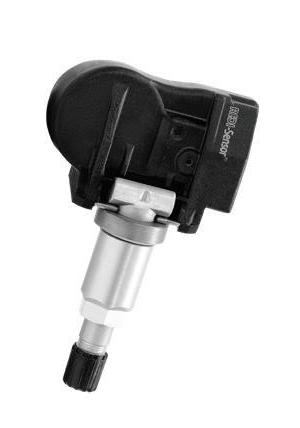
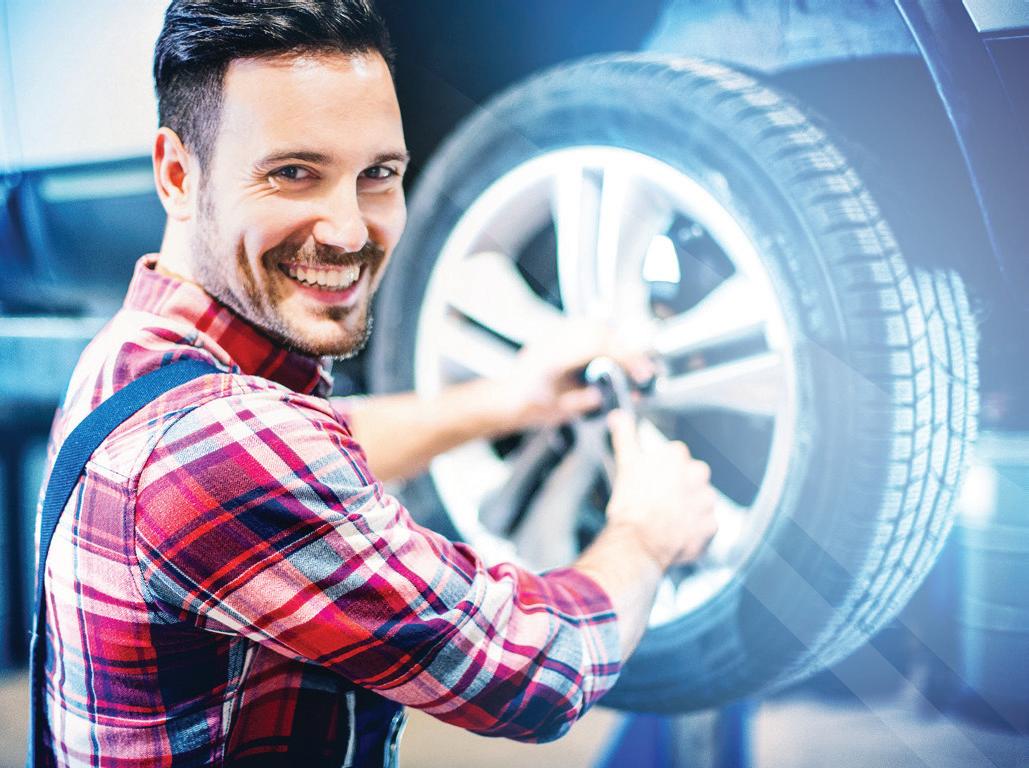
Say ‘yes’ to OEM TPMS expertise.
REDI-Sensor – A Trademark of the Continental Corporation
REDI-Sensor is built by one of the world’s leading suppliers of OEM TPMS systems – Continental.
That’s why REDI-Sensor relearns faster and easier. Plus, there’s never any programming required with REDI-Sensor. It’s ready right out of the box.
Get the full story:
REDI-Sensor.com
AUTOMOTIVE INTELLIGENCE
TPMS KITS

Ask Your Autel Distributor for Details
TS508/ TS508WF
PLUS
COMPLETE SOLUTION
Confirmation of Transmitter ID Registration:
1. Connect the Techstream to DLC3; 2. Turn ignition ON and turn Techstream
ON; 3. Enter the following menus: Chassis/
Tire Pressure Monitor/Data List and then check the Data List for correct tire pressures; 4. If normal pressure values are displayed, the IDs have been registered correctly.
NOTE: It may take about two or three minutes until the values are displayed. If the values are not displayed a er a few minutes, perform troubleshooting according to the inspection procedure for DTCs C2121/21 to C2125/25 or C2131/31 to C2135/35.
NOTE: A er all IDs are registered, DTC C2126/26 (for “MAIN” mode) or DTC C2127/27 (“2nd” mode) is set and the tire pressure warning light blinks for one minute and then comes on. Once the tire pressure warning ECU and receiver successfully receive radio waves from all the transmitters whose IDs are stored in the ECU and receiver, DTC C2126/26 or C2127/27 is deleted and the tire pressure warning light goes o .
If Equipped with A TPMS Selector
Switch: Determining Installed Wheels Transmitter ID Status (“MAIN” or “2nd”) 1. Turn the ignition ON. NOTE: TPMS Selector Switch button operation; 2. Set the tire pressure warning selector switch to “MAIN” position; 3. Ensure the tire pressure of all wheels is set to the speci ed values; 4. Remove valve core and rapidly reduce the pressure of one tire; 5. Check for the following items. If both of them are true, the transmitter ID of the currently installed wheel is registered to “MAIN:”
• Tire pressure warning light comes on; • When checked with the Techstream, the tire pressure data displayed on the screen has been changed for the de ated tire;
6. If either of the above conditions is not true, switch the tire pressure warning selector switch to “2nd”. Perform steps three through ve again. If both conditions are now true, the transmitter
ID of the currently installed wheel is registered to “2nd.”
DISMOUNTING/MOUNTING PROCEDURES
CAUTION: e tire should be dismounted from the wheel using the tire changer manufacturer’s instructions. Use the following information to avoid damage during the dismounting/mounting procedures.
NOTE: The system will need to be initialized when tires are rotated; tires are replaced with tires of di erent pressures; tire pressure sensor and/or tire pressure monitor ECU are replaced. When a tire pressure sensor and/or tire pressure monitor ECU are replaced, the sensor ID must be memorized (registered) by the tire pressure monitor ECU prior to system initialization. See RESET PROCEDURES.
TIRE PRESSURE SENSOR
CAUTION: Do not try to install a tire pressure sensor in a steel wheel or a ermarket wheel. Use only an original style factory wheels.
CAUTION: e use of tire sealants is strictly prohibited for vehicles equipped with TPMS. Tire sealants can clog tire pressure sensors.
NOTE: e average life of the grommet of the tire pressure sensor is approximately ve years, at which time it must be replaced. If the valve is leaking air, is less than ve years old and there is no problem with grommets, retighten the valve nut to 35 inch-pounds.
NOTE: If the tire pressure valve subassembly is going to be replaced, make a note of the seven-digit number (transmitter ID) before installation.
Removal
1. When replacing a wheel or tire, tire pressure sensors must be set up in one of the following ways:
• Remove the sensor from the old wheel and install it to the new wheel; • Keep the same wheel with tire pressure sensor and replace only the tire, or; • Use a new wheel and sensor. e new sensor must be registered.
2. Remove the wheel, remove the valve core and cap and release air from the tire; 3. A er ensuring that air is su ciently released, remove the nut and washer used to x the tire pressure sensor and drop the sensor inside the tire;
TORQUE SPECIFICATIONS
Component Ft.-lbs. (N.m) Wheel nut 100 (135)
Sensor-to-valve Torx screw Ft.-lbs. (N.m)
13 (1.5)
4. A er dropping the tire pressure sensor into the tire, disengage the bead using the shoe of the tire remover.; 5. Remove the bead on the upper side in the usual operation; 6. Take out the sensor from the tire and remove the bead on the lower side as in usual operation; 7. Remove the inner grommet from the tire pressure sensor.
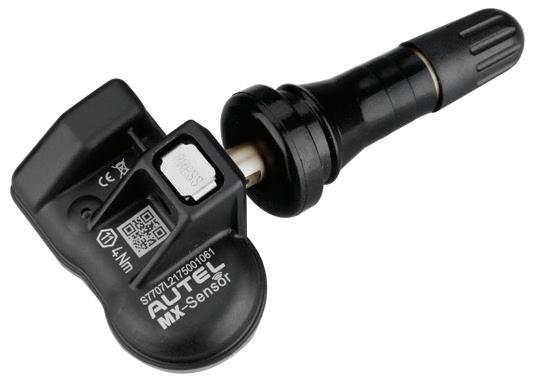
Installation
1. Insert the tire pressure monitor valve into the valve installation hole. Insert from the inside of the rim so that the print surface can be seen. Check that there is no visible deformation, damage or other abnormalities on the transmitter and that there is no foreign matter on the inner grommet and/or located around the rim hole. If installed in the reverse direction, the tire pressure monitor valve may be damaged or fail to transmit signals when running at high speed. If installing a new tire pressure monitor valve, write down the ID number before installation. It is necessary to register an ID in the
ECU a er installation. 2. Install the washer on the tire pressure monitor valve from the rim side and tighten the nut to 35 inch-pounds.
Check for the following:

• ere is no foreign matter on the washer and nut; • If the tire pressure monitor valve was removed, there is no damage or cuts and there is no foreign matter — such as mud, dirt or sand — attached to the grommet. Replace the grommet with a new one if any of these defects are found; • ere is no oil, water or lubricant around the rim hole, tire pressure monitor valve, washer and nut. Failing to do so may result in improper installation. 3. A er the tire is in ated, the valve nut may be loose. Retighten the nut to the speci ed torque and then check for air leaks with soapy water. CAUTION: If the sensor is positioned outside this area, it generates interference with the tire bead, causing possible damage to the sensor; 4. Set the wheel disc to the mounting machine and install the lower tire bead.
Position the main body of the sensor in the shaded area as shown in the illustration; 5. Making sure that the tire bead and tool do not interfere with the main body of the sensor and that the sensor is not clamped by the bead, install the upper bead; 6. When putting air into the tire, rst install the tire pressure valve straight onto the stem of the tire pressure warning valve and transmitter; 7. Install the tire and wheel assembly; 8. When a new sensor is installed, the ID code will need to be registered; 9. For any other type of replacement, the sensor ID code will not need to be re-registered. If using the originally installed tires, put the selector switch at
“MAIN.” If using tires purchased later, put the switch at “2nd;” 10. A er completing the operation, remove the valve core to rapidly release the air in the tire. Ensure that the tire pressure warning light comes on. If the warning light does not come on, refer to appropriate manufacturer service information, and; 11. If there is an air leakage, tighten the nut to a force of 35 inch-pounds and push the valve core two times to remove any dirt attached to it. If air continues to leak, replace the grommet, washer and nut. ■
Information for this column comes from the tire pressure monitoring systems data in ProDemandR, Mitchell 1’s auto repair information software for domestic and import vehicles. Headquartered in Poway, Calif., Mitchell 1 has provided quality repair information solutions to the automotive industry since 1918. For more information, visit www.mitchell1.com. To read archived TPMS articles, visit www.moderntiredealer.com.
IS THE ONLY TPMS MANUFACTURER TO OFFER A
COMPLETE SOLUTION
OE QUALITY SENSORS POWERFUL SCAN TOOLS
UPDATES POWERED BY DIAGNOSTICS
ALUMINUM OR RUBBER VALVE STEMS AVAILABLE
1-SENSOR
• 1-SKU Limited Inventory • Dual Frequency 315MHz + 433MHz • 99% Vehicle Coverage • Interchangeable Valve Stems
TS508KMV-1
• Read/Relearn All Known Sensors • 4 MX-Sensor Programming Methods • FREE Software Updates for Life of Tool • Exclusive TPMS Status Screen
CONTACT YOUR AUTEL DISTRIBUTOR FOR MORE TPMS KIT OPTIONS
New General all-weather tire
The General brand has entered the all-weather tire market with the AltiMAX365, available in 52 sizes, ranging from 15 inches to 20 inches in rim diameter, all with 3-Peak Mountain Snow ake certi cation for severe winter service. The product targets drivers “who want a versatile tire providing bestin-class overall performance and optimal traction in deep snow compared to typical all-season tires,” say Continental Tire the Americas LLC of cials.
CONTINENTAL TIRE THE AMERICAS LLC www.generaltire.com/tires
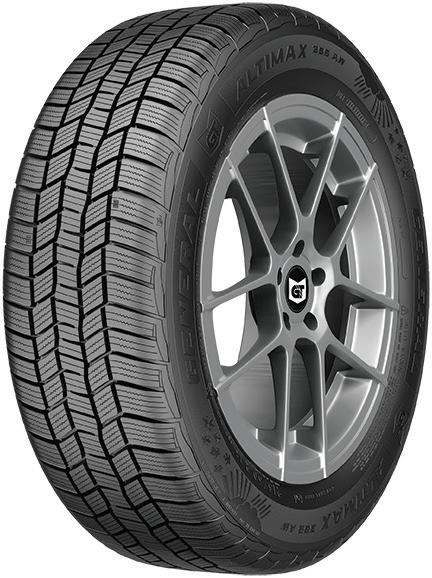
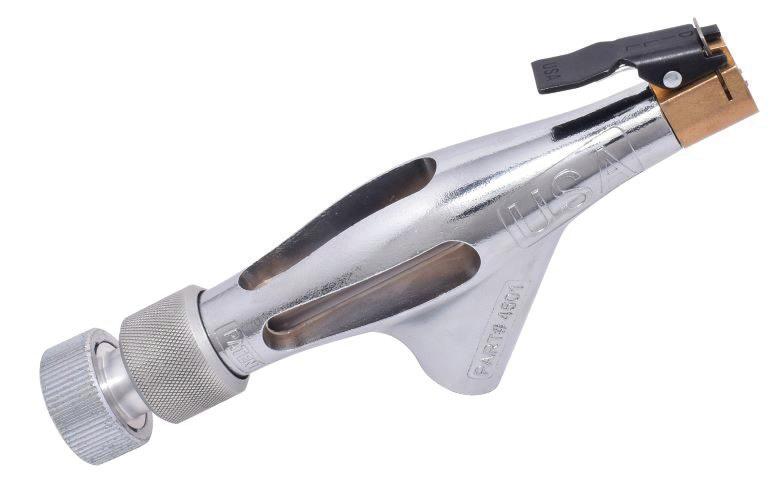
Pirelli adds to Scorpion line
Pirelli Tire North America’s new Scorpion AS Plus 3 touring allseason tire targets crossovers, SUVs and pickup trucks. The tire comes with a 70,000-mile limited treadwear warranty and is available in 37 sizes, ranging from 17 inches to 22 inches. Key tments include the Jeep Cherokee, Honda CR-V, Toyota Highlander, Ford F-150 and Kia Sorento. The Scorpion AS Plus 3 contains innovative compound materials, including highly functionalized polymers.
PIRELLI TIRE NORTH AMERICA www.pirelli.com
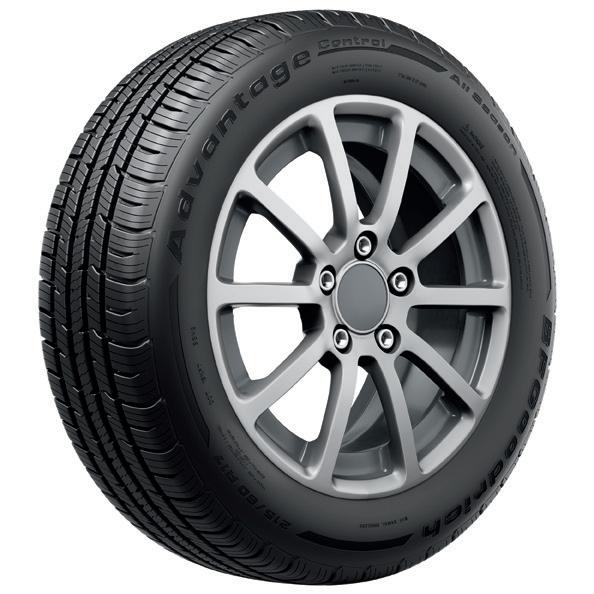
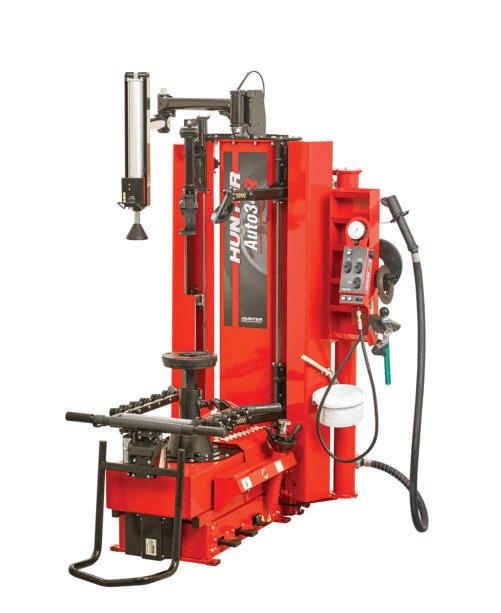
Michelin expands BFGoodrich line
The new BFGoodrich Advantage Control from Michelin North America Inc. offers all-season traction and handling for passenger cars, crossovers and minivans. Available in both the U.S. and Canada, the tire features Aqua-Flume Technology that when combined with its advanced all-season compounds, offers enhanced braking on wet roads. The tire also features a special groove system that is designed to evacuate water from its contact patch.
MICHELIN NORTH AMERICA INC. www.bfgoodrichtires.com Cooper rolls out Rugged Trek
The new Cooper Discoverer Rugged Trek from Cooper Tire & Rubber Co. is an all-season tire designed for off-road and on-road performance. The tire features Cooper’s Whisper Grooves technology, which helps minimize noise at high speeds, plus the company’s Stable Trac technology for optimal stability and control. The Discoverer Rugged Trek also is available in two unique upper sidewall designs, one on each side of the tire, for a customized look.
COOPER TIRE & RUBBER CO. www.us.coopertire.com
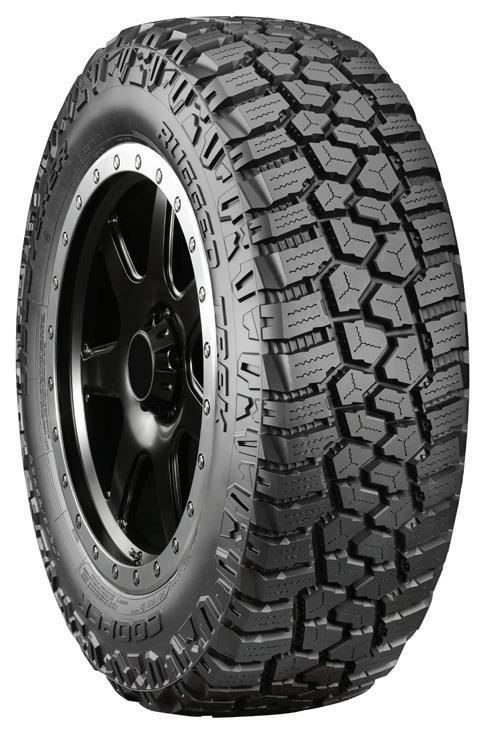
Dill introduces Fast-N-Flator
Dill has unveiled its 4501 Fast-N-Flator core remover and in ator, which allows for the removal of the valve core and tire in ation, all in one. The product, which is made in the United States, “removes the guesswork when setting tire pressure during in ation and saves time in high-production tire mounting facilities,” according to Dill of cials. The Fast-N-Flator’s torque knob ensures the valve core is properly reinstalled every time, preventing errors and comebacks.
DILL AIR CONTROL PRODUCTS www.dillvalves.com
Hunter unveils new tire changer
Hunter Engineering Co. is introducing the new Auto34R tire changer, designed to quickly and easily service the broadest range of assemblies, while also dramatically reducing the opportunity for wheel damage through operator error. The Auto34R’s speed and ease of use derive from its telescoping chassis that brings the wheel to the rollers and tool head. Direct rim tracking lowers the stress on beads during mount and demount cycles, saving operator time and reducing the risk of wheel damage.
HUNTER ENGINEERING CO. www.hunter.com
WHEN YOU CONTACT ONE OF OUR ADVERTISERS PLEASE BE SURE TO MENTION YOU SAW THEIR AD IN MODERN TIRE DEALER
ADVERTISER
American Omni Trading
Apollo Vredestein Tires Inc.
AUTEL
BKT USA Inc.
Brake Parts Inc., Raybestos
Continental Corporation
Dannmar, A division of BendPak
Falken Tires
Firestone Tire
Fury Tires
Hunter Engineering Company
K & M Tire Inc.
Ken-Tool
Kenda Tires USA
Linglong Americas Inc.
Maxxis Tires
Mr. Tire/Big 3 Tire
Nexen Tire America Inc.
Nitto Tire U.S.A. Inc.
Pirelli Tire LLC
Prinx Tire North America Inc.
SEMA Show
Sentury Tire
Yokohama Off-Highway Tires America Inc.
Yokohama Tire
PAGE
13, 51
WEBSITE
www.thunderertireusa.com
35 www.apollotrucktires.com
29, 54, 55 www.autel.com
11 www.bkt-tires.com
9
53
27
49
21
43
41
25
35
IBC
7
19
37
IFC
OBC
5
47
57
17
15
39 www.raybestos.com
www.continentaltire.com
www.dannmar.com
www.falkentire.com
www.firestonetire.com
www.furytires.com
www.hunter.com
www.kmtire.com
www.kentool.com
www.kendatractionrewards.com
www.linglongtire.com
www.maxxis.com
www.mrtirebig3tirectd.com
www.nexentireusa.com
www.nittotire.com
www.us.pirelli.com
www.prinxtire.com
www.SEMAshow.com
www.senturytireusa.com
www.yokohama-oht.com
www.yokohamatire.com
